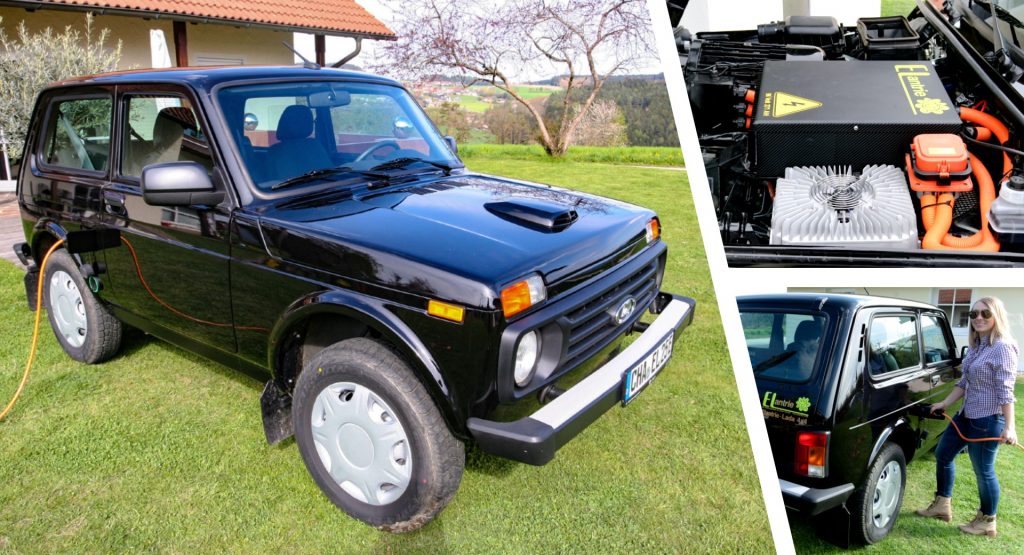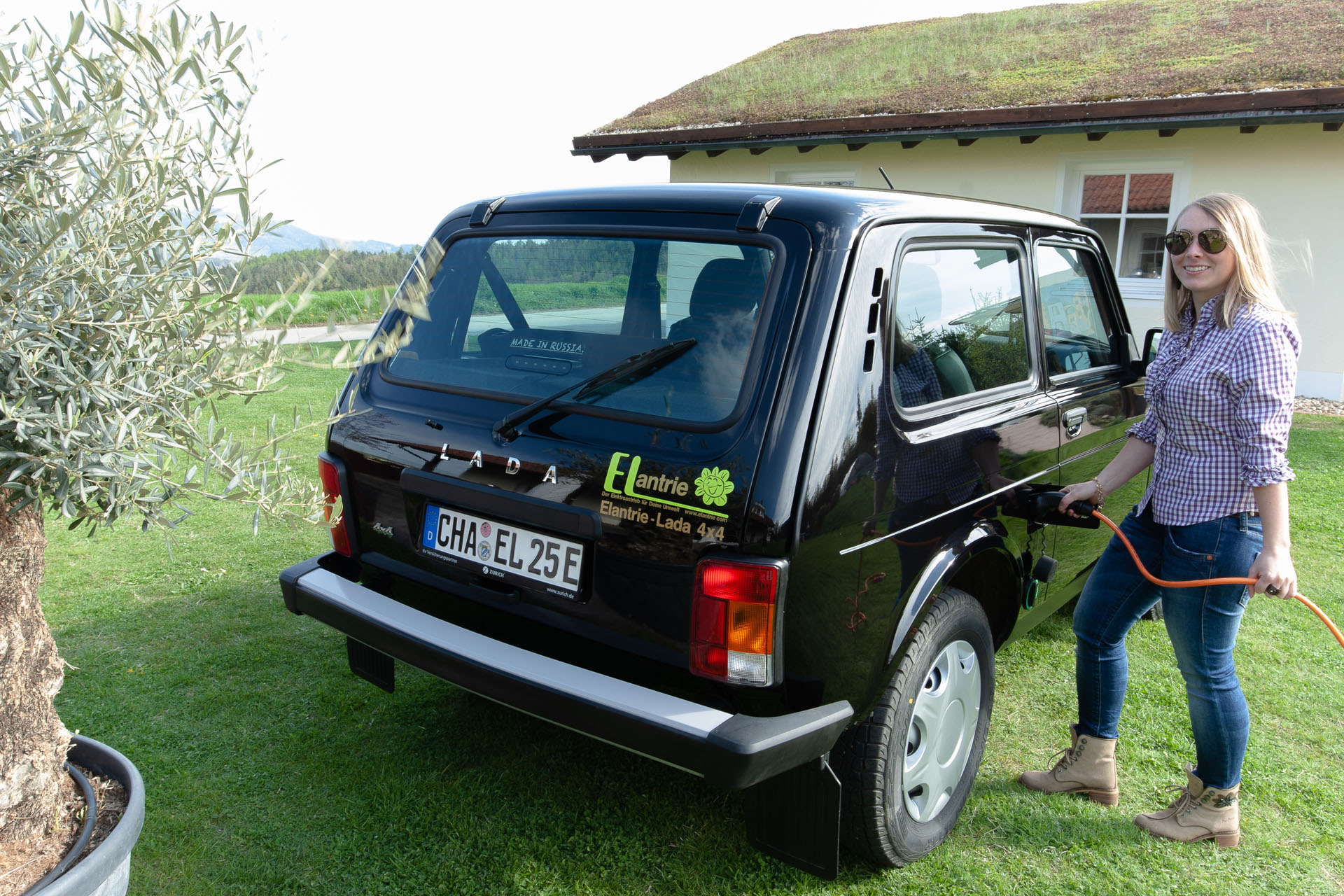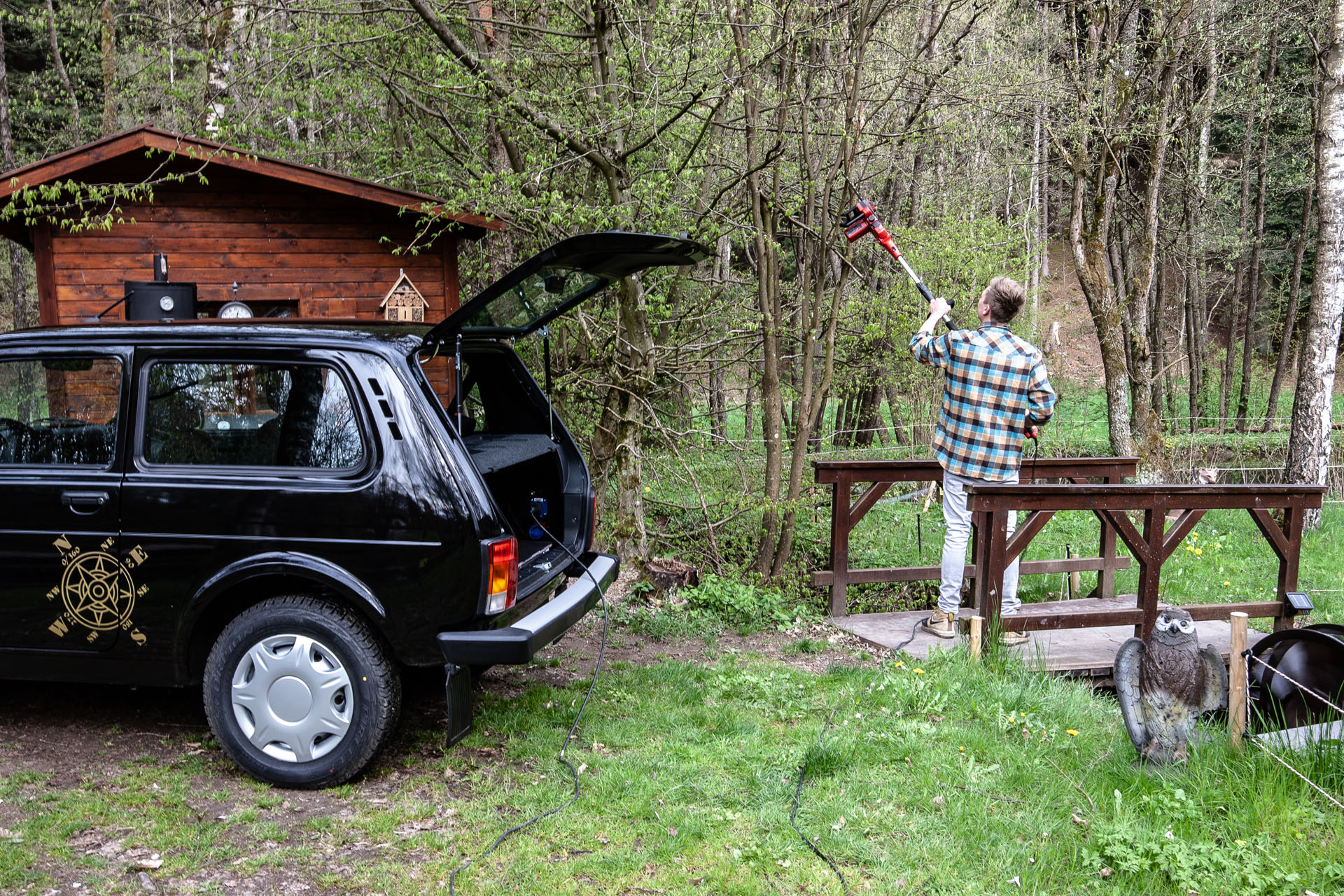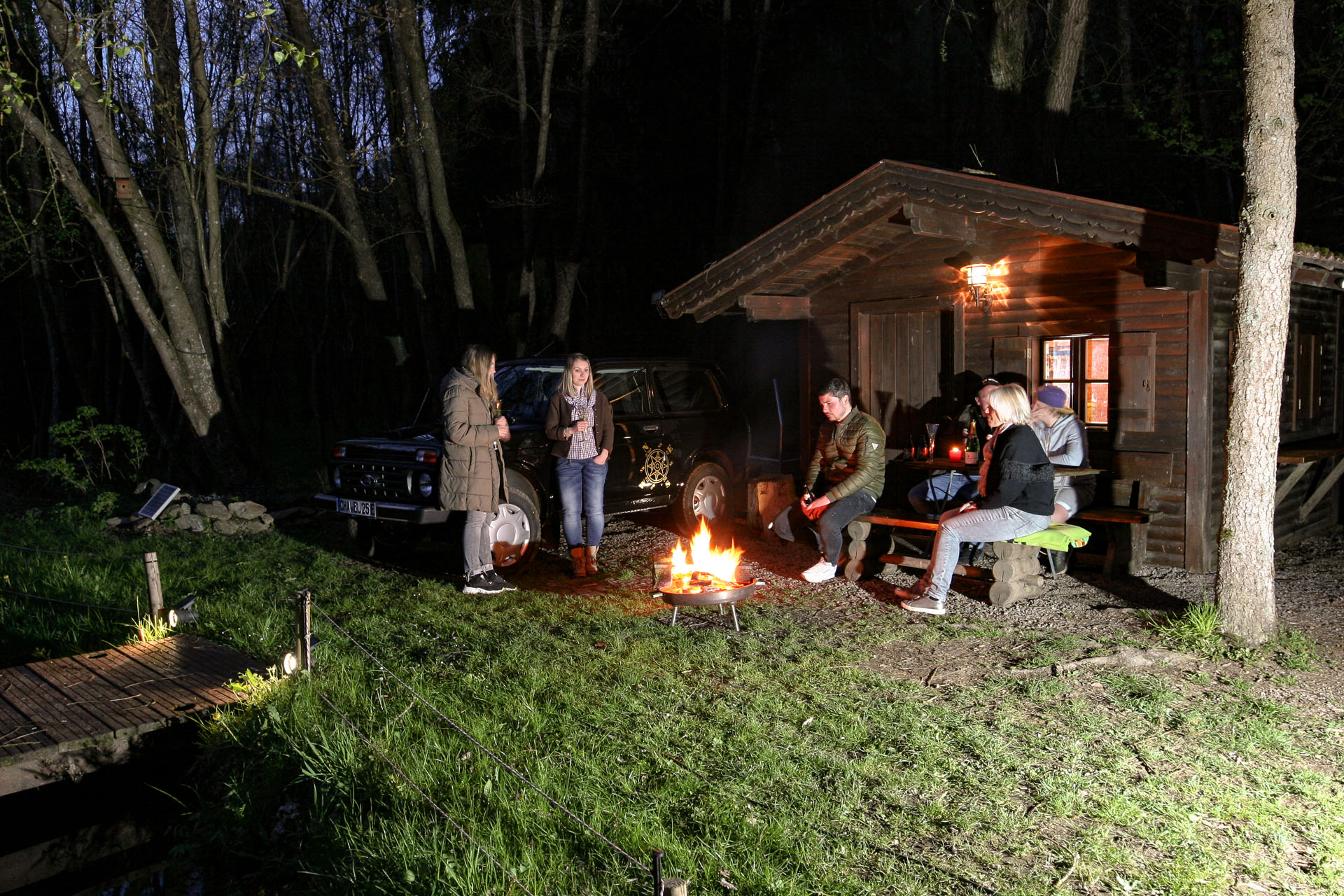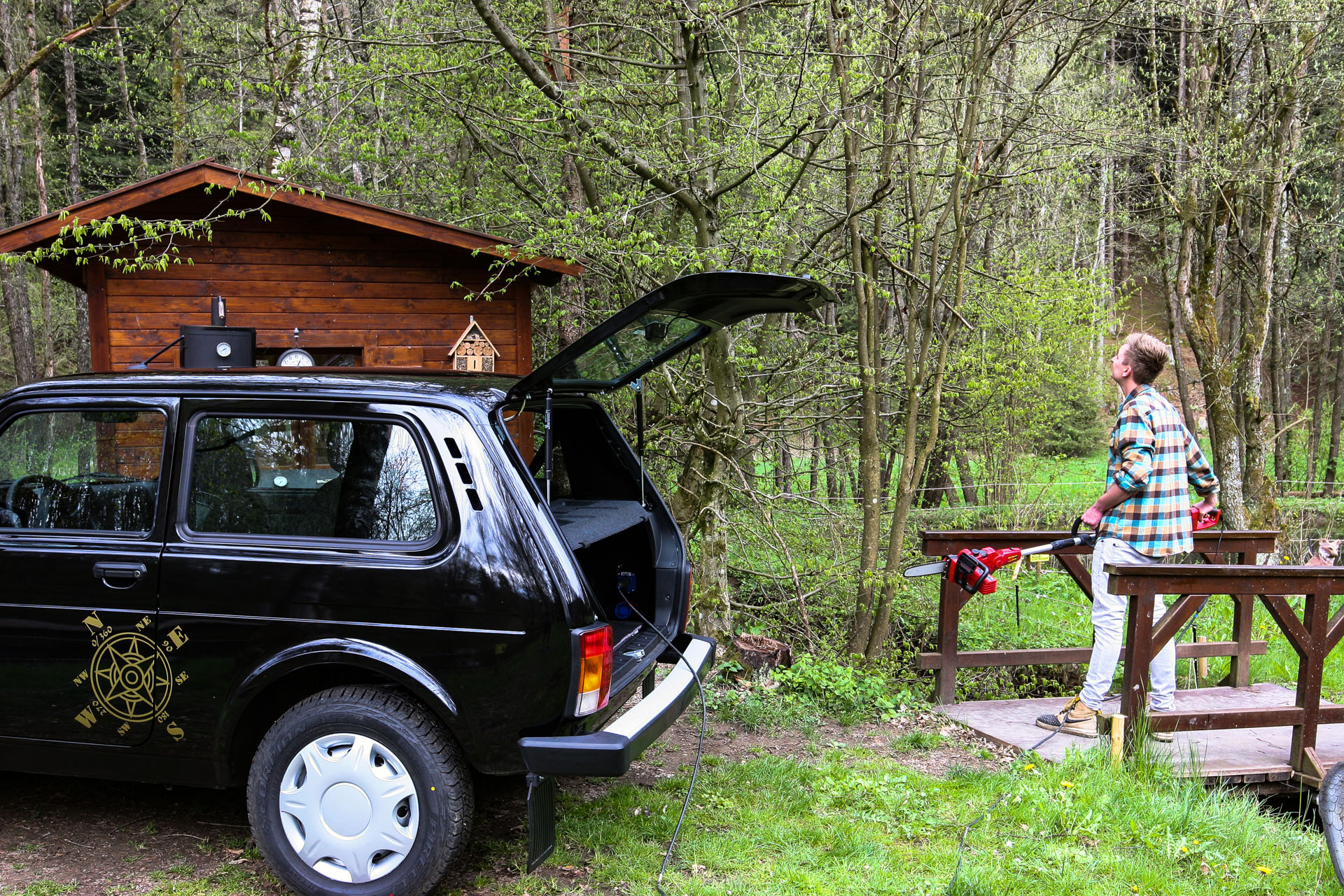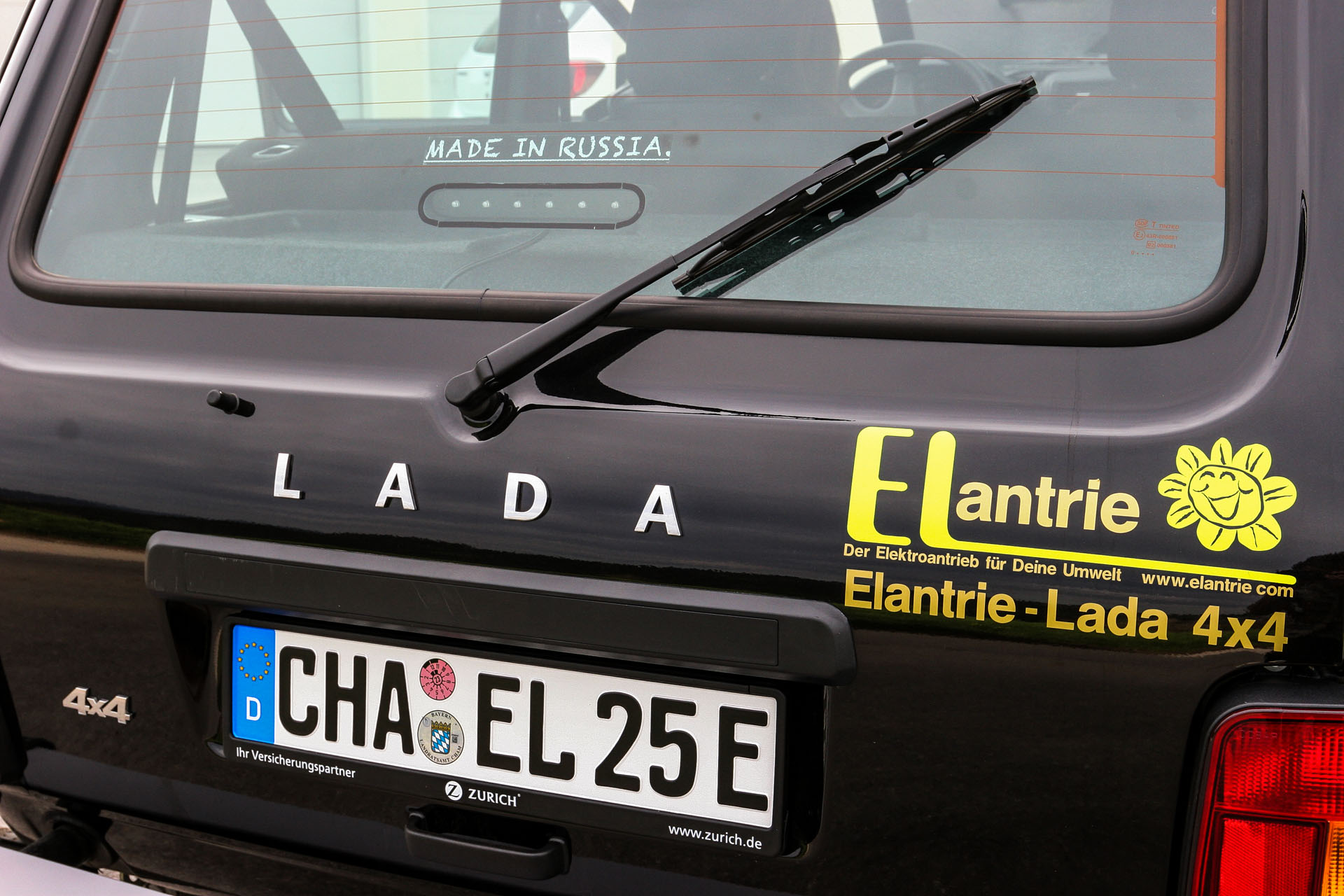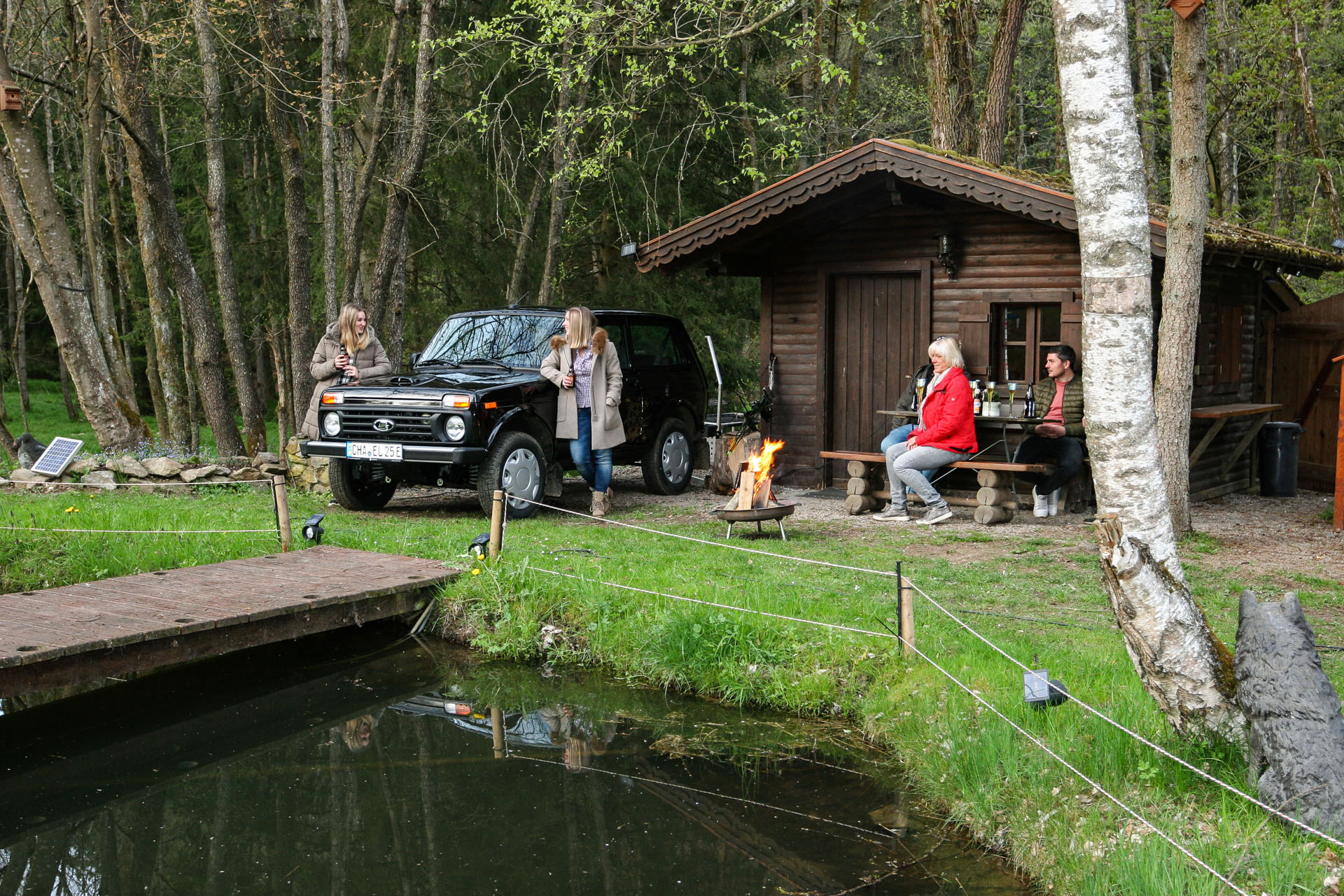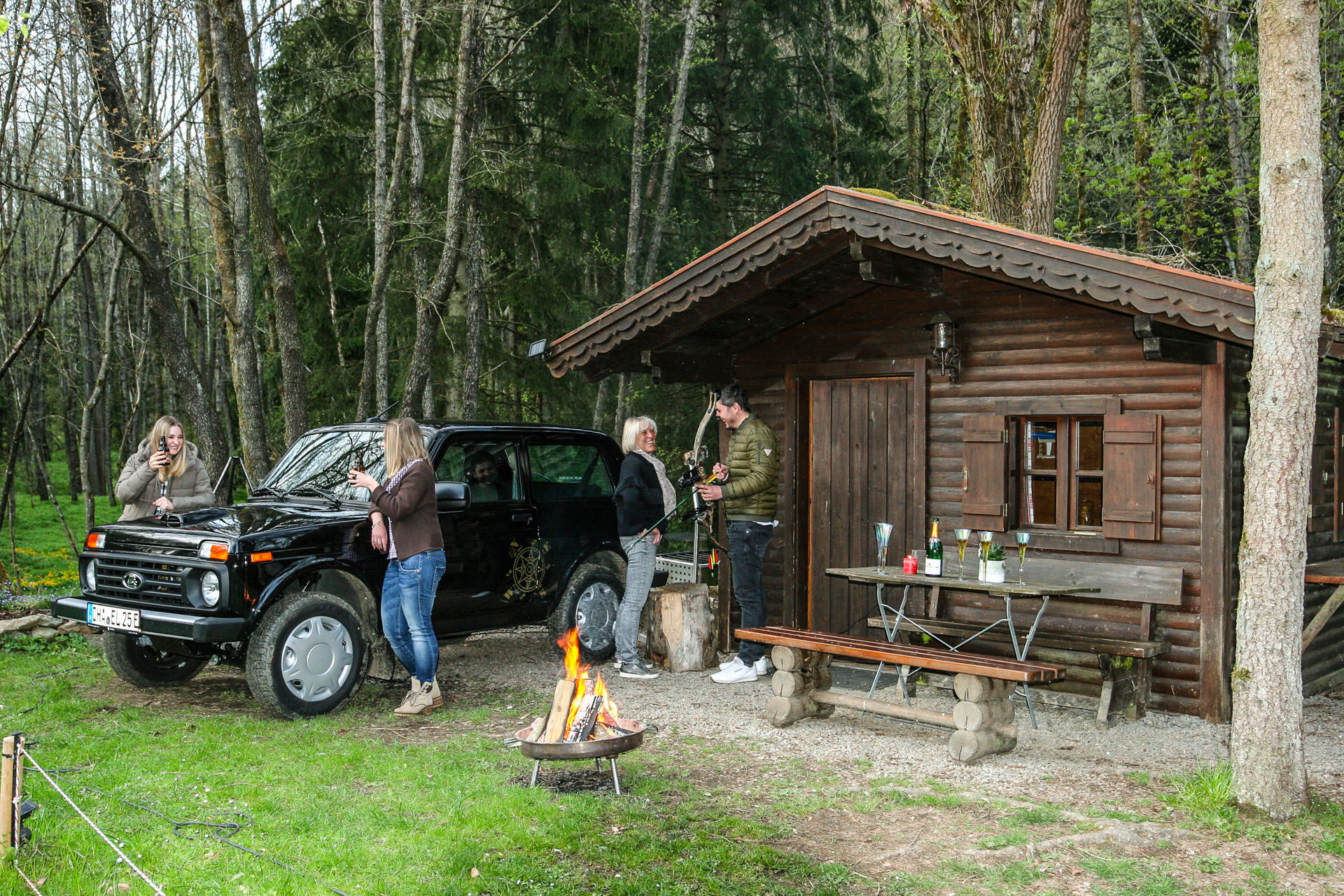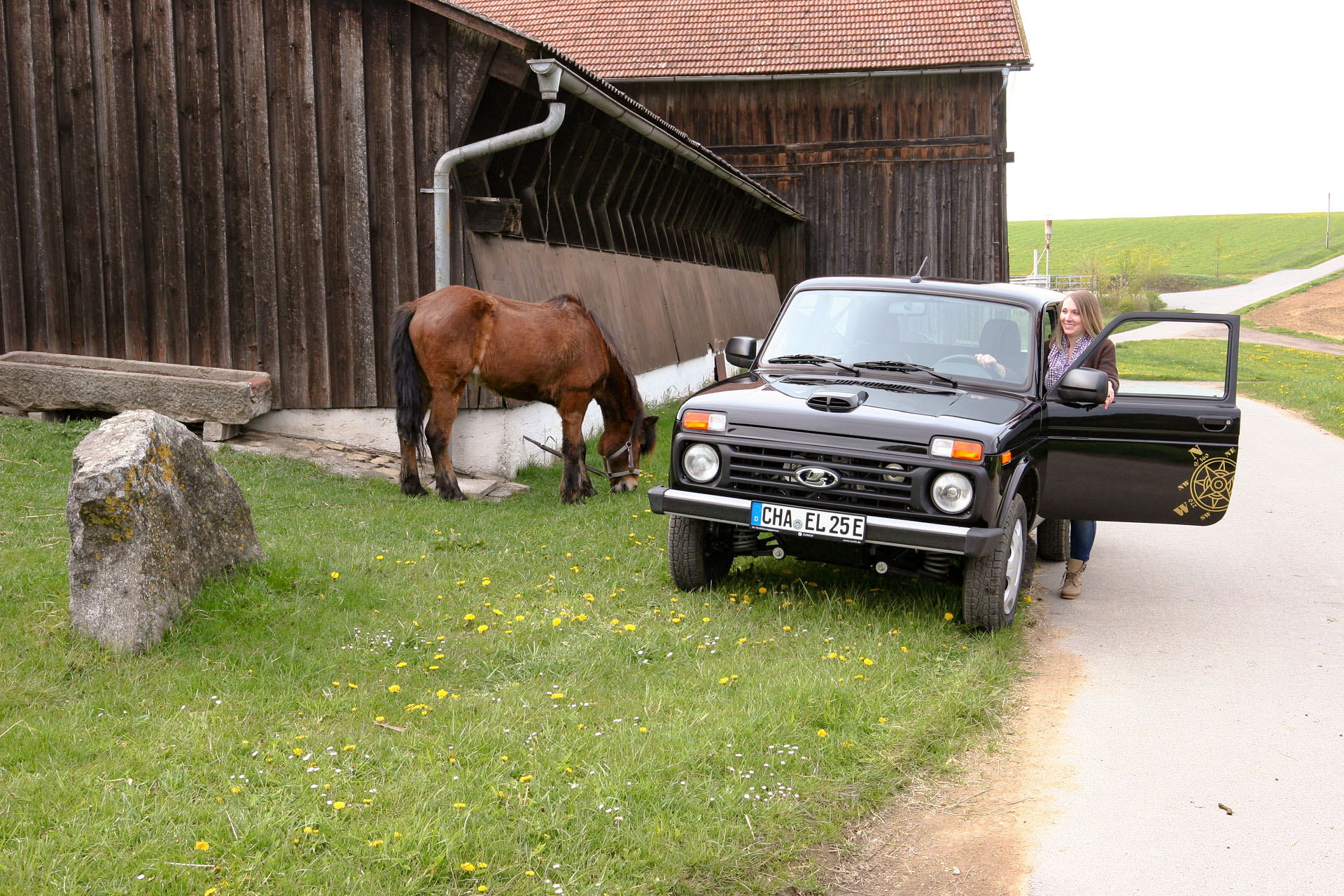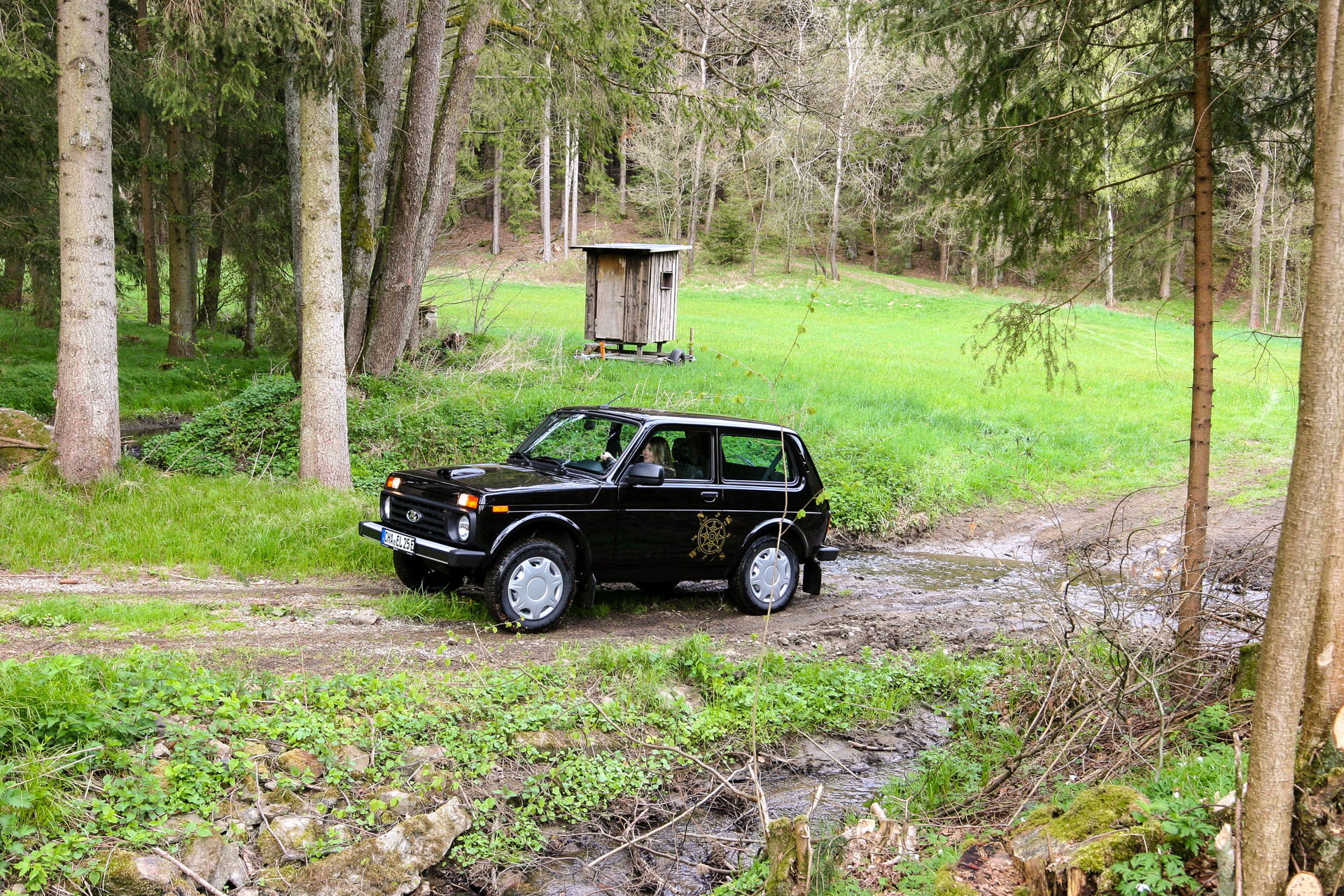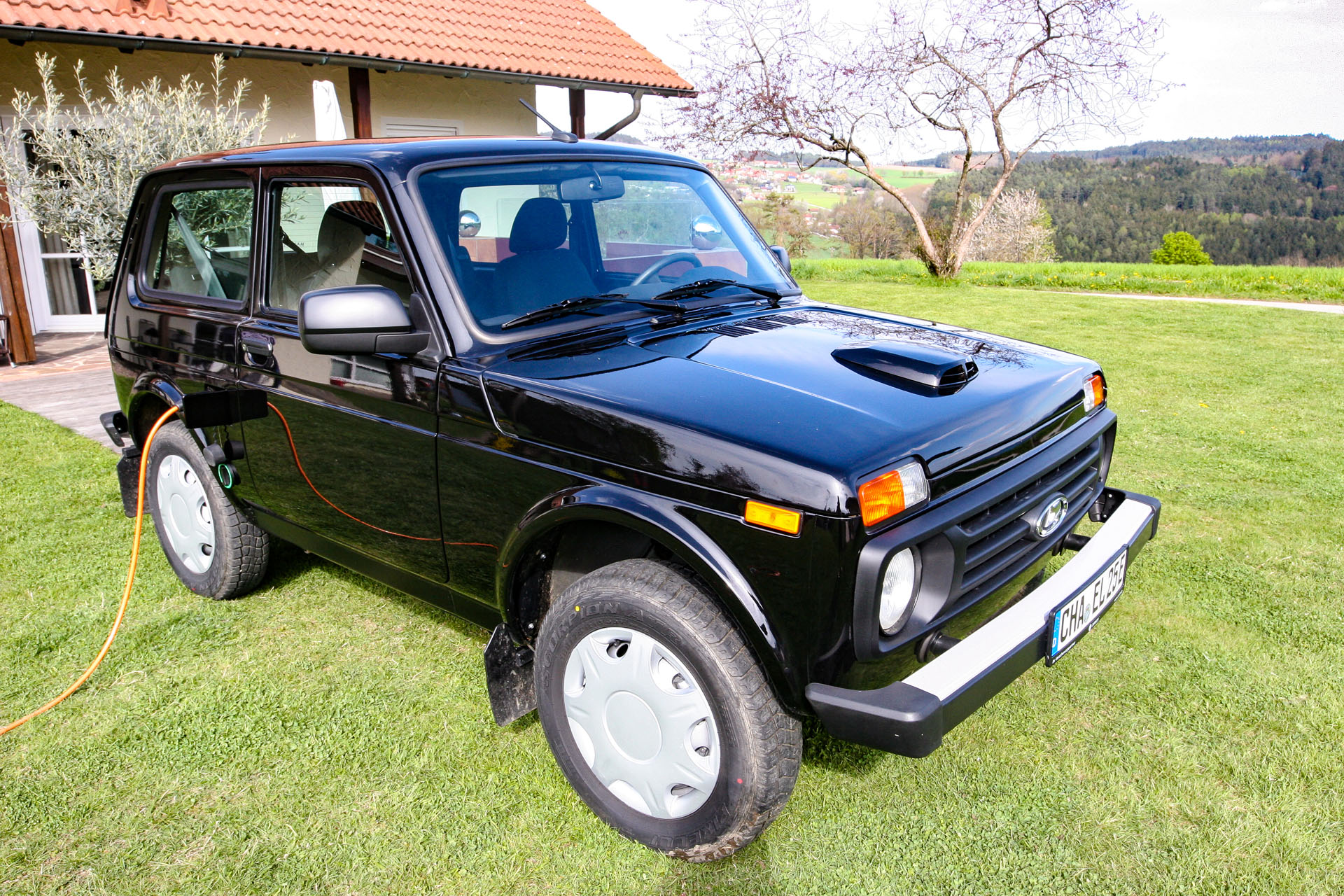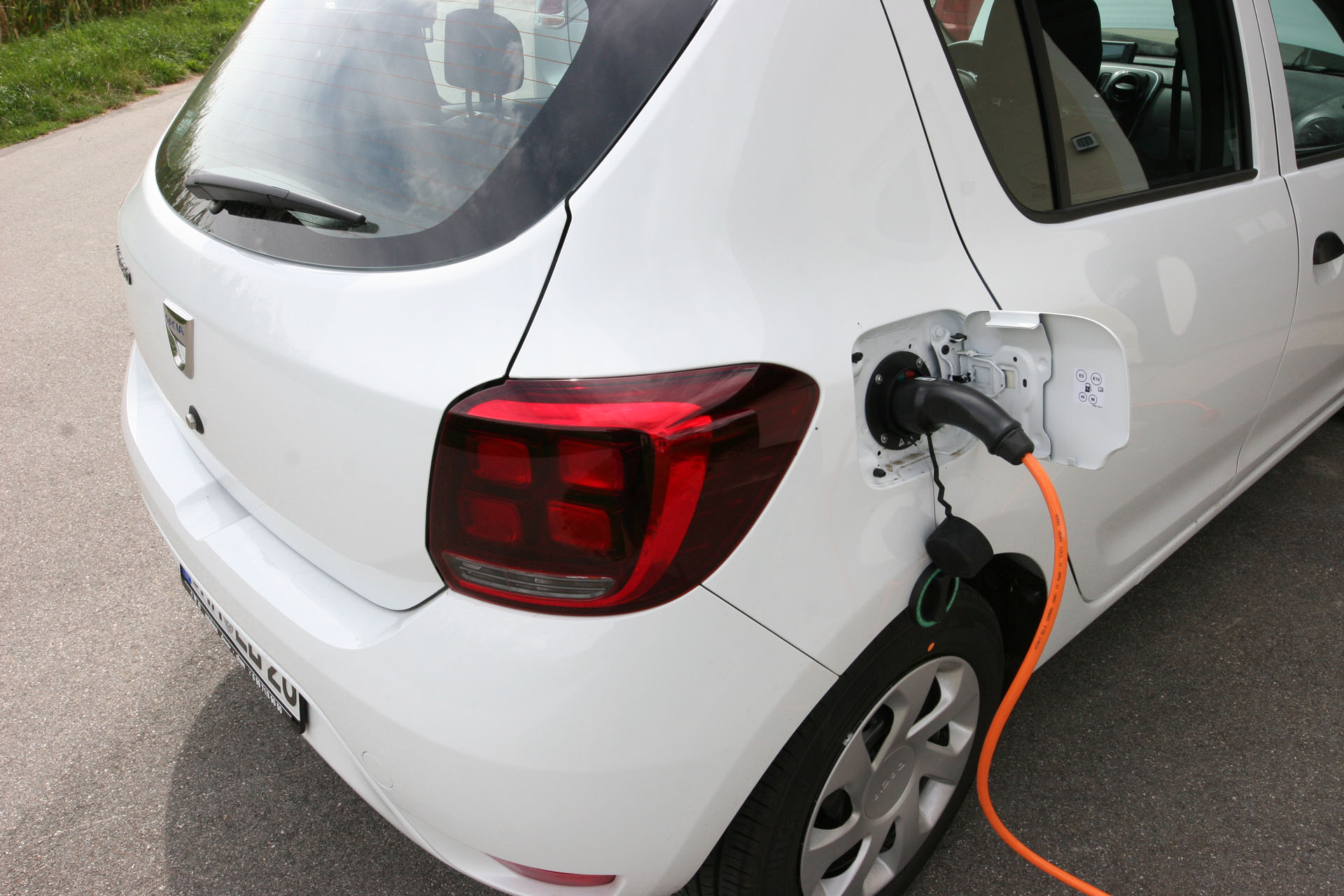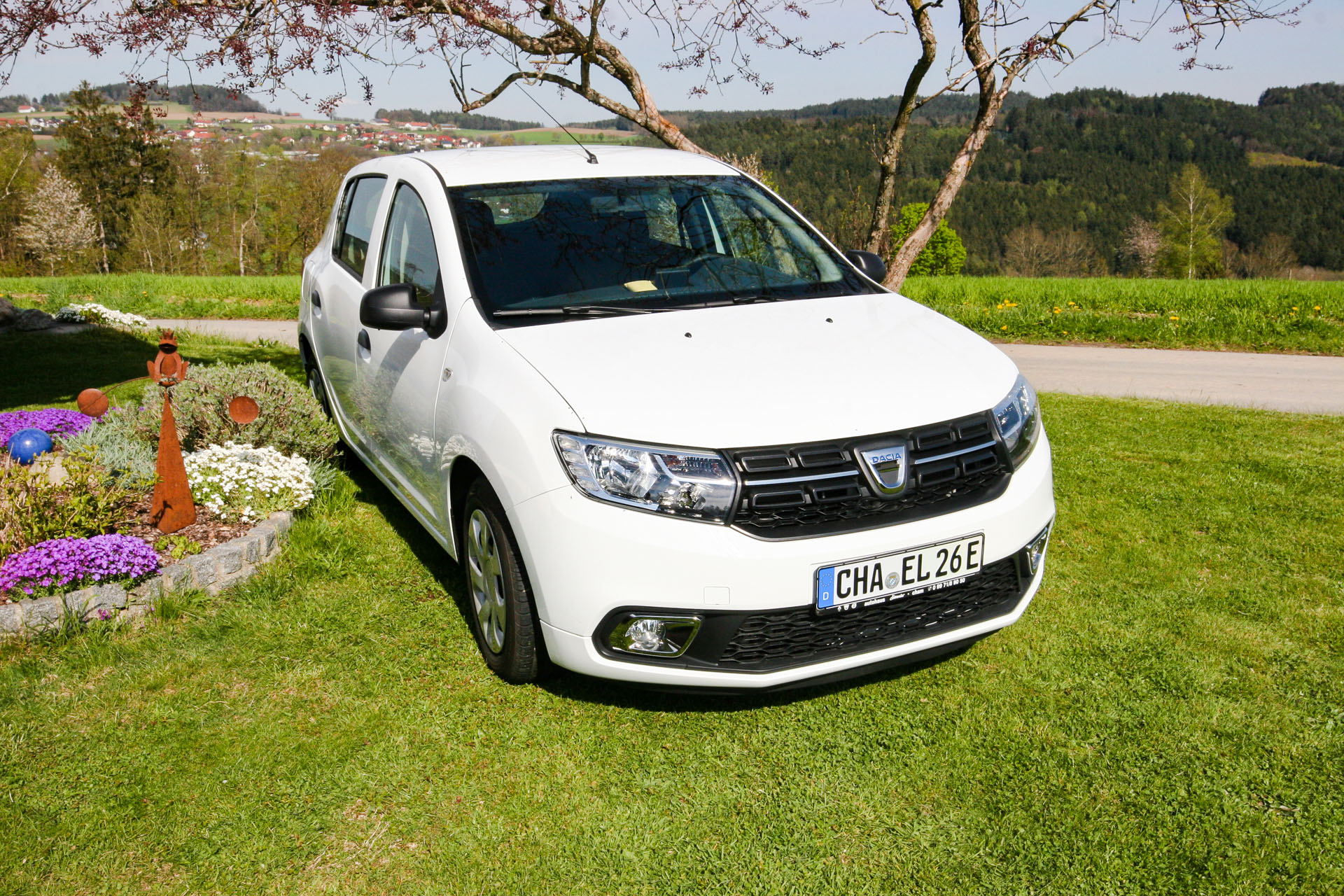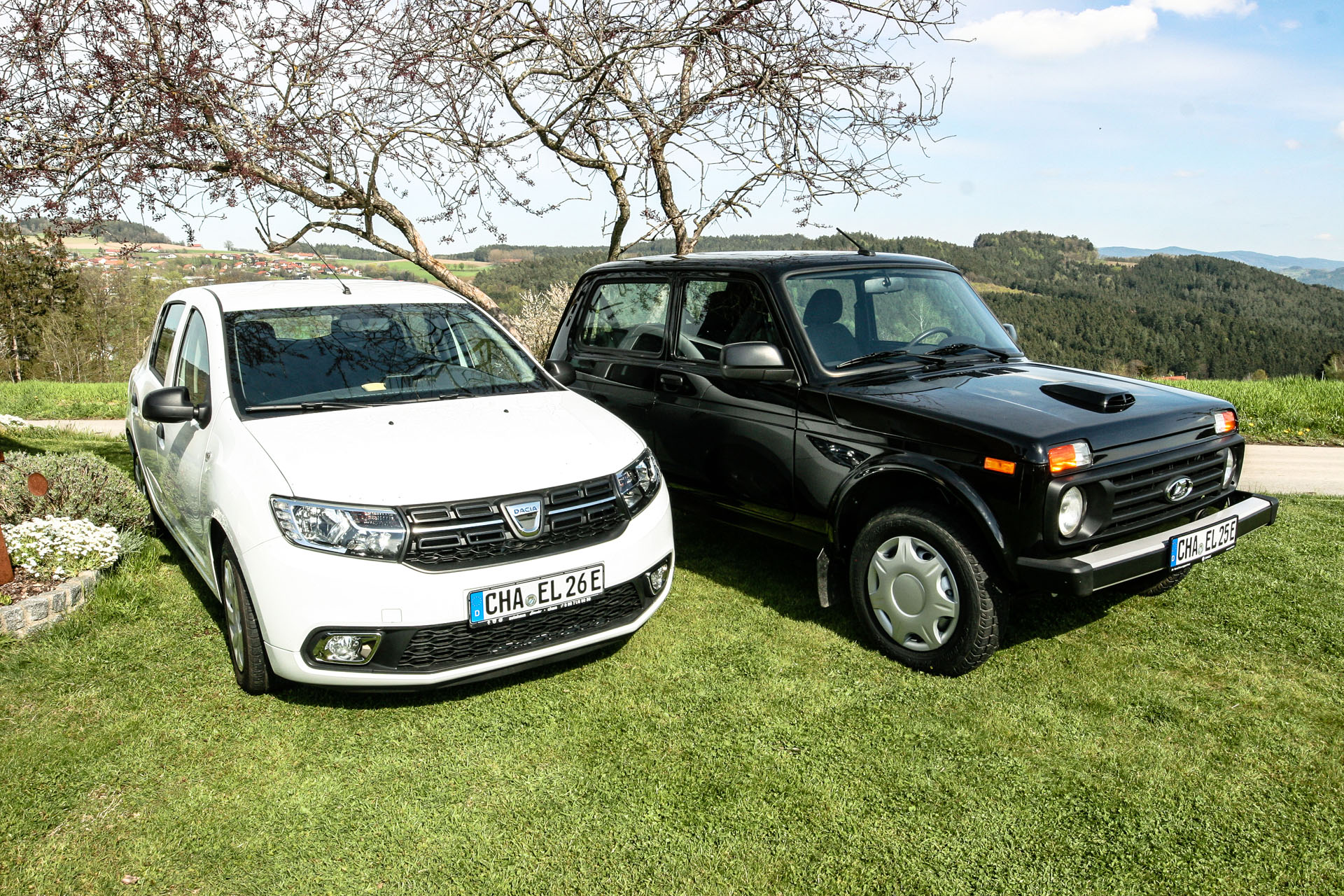A German company called Elantrie, owned by Schmid GmbH, is offering an electric conversion of the Lada 4×4, a.k.a. the Lada Niva, which can be retrofitted to all ICE-powered models. The fully electric powertrain allows the owners to step into the era of electrification with a low-cost conversion while retaining most of the car’s original components and capabilities.
The electric Niva looks identical to the immortal Russian off-roader, apart from the lack of an exhaust pipe and the addition of a hood scoop. Under the bonnet though, there is an electric motor driving the existing crankshaft and sending power to all four wheels. The electric motor produces 87 hp (65 kW / 88 PS) which won’t impress anyone, but it is still slightly better than the stock model’s 82 hp (61 kW / 83 PS).
Read Also: Iconic Lada Niva Bronto Soldiers On With An Updated Interior
The energy is stored in a LiFePO4 lithium-ion battery with a capacity of 30 kWh that’s located where the fuel tank used to be. According to the company, the off-roader’s range is between 130-300 km (81-186 miles) depending on use. The durable battery will still be good for 80 percent of its original performance even after 450,000 km (280,000 miles) and 9,000 cycles, if you charge them when they reach 50 percent of their power as suggested.
Another cool feature is that the Lada can be integrated into the power grid, storing excess energy and feeding it back to the system when needed. There is also a 220-volt socket in the boot, supporting any electrical appliance of up to 2,000 watts such as gardening tools or camping equipment.
Read More: 2020 Lada Niva Gains A More Comfortable Cabin, Exterior Stays Largely The Same
The cost for the conversion is around €2,800 ($3,288). If you are not an existing owner, a brand new Niva that is already converted to electric power would cost you €19,900 ($23,371).
Elantrie states that the ICE-powered Niva consumes an average of 15 lt/100 km, which translates to a fuel cost of €3,175 ($3,728) per year for 14,600 km (9,072 miles). The equivalent cost for the electric version with home charging would be just €1,174 ($1,379), saving €2,000 ($2,349) in the first year alone. Those figures apply for Germany, but the savings are indicative of other European markets where petrol is even more expensive.
Finally, besides the Russian off-roader, the company is also offering the same conversion for the previous-generation Dacia Sandero.




